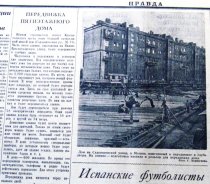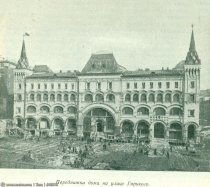Mosque

Movement technology
There's a lot of information about how many buildings were moving. For the first time, the urgent need to move has arisen in the fifteenth century. The talented engineer, Aristotle Fioravanti, has moved the bell of Santa Maria Madjole to the glossy town of Bologna, which has prevented the building of the city administration. In order not to deflect the sanctuary (which, by the way, had been demolished in 400 years), the prospective engineer had entered a bell in a cage of powerful wooden braces in order to prevent the possibility of cracking, and had moved the tower to the poles through a canut system and blocks. For that time, the sight was really impressive, because the bell was about a nine-storey house, and she moved over 13 metres. By the way, Aristotle Fioravanti's biography has a place to dig and wonder. For example, Russia owes it to him to build the Kremla Scholarship. But it's a different story, as they say.
 Since then, the principle of movement has not changed much: first, the house is reinforced by a special metal frame through the planned cut of the foundation. In order to make a particular rigidity, the frame is connected by transverse and diagonal relationships. This is necessary for houses with an internal carcass, for example, a colonel that can move. Once the frame is installed, the house is cut off from the foundation, the walkers and tracks under the frame. The house is then raised on housecrats, placed on special cages and driven to the right place. The move itself, or it's better to say the roll, was taking a little time at home, and preparation for it was weeks or months.
Since then, the principle of movement has not changed much: first, the house is reinforced by a special metal frame through the planned cut of the foundation. In order to make a particular rigidity, the frame is connected by transverse and diagonal relationships. This is necessary for houses with an internal carcass, for example, a colonel that can move. Once the frame is installed, the house is cut off from the foundation, the walkers and tracks under the frame. The house is then raised on housecrats, placed on special cages and driven to the right place. The move itself, or it's better to say the roll, was taking a little time at home, and preparation for it was weeks or months.
Related posts:
 Trucks, disarmed, transported, moving Telephone: Ask the administrator. 250 roubles We will carry out any type and volume of work. We will provide skilled personnel…
Trucks, disarmed, transported, moving Telephone: Ask the administrator. 250 roubles We will carry out any type and volume of work. We will provide skilled personnel… Call the cargo. We warn the services of consignors, a minimum 2-hour consignor, this service is prevented from entering any area of Rostova na-Dona within 1-2 hours…
Call the cargo. We warn the services of consignors, a minimum 2-hour consignor, this service is prevented from entering any area of Rostova na-Dona within 1-2 hours… Because business development was not on the ground and depended on many factors, each organization was experiencing an office move to another location. There may…
Because business development was not on the ground and depended on many factors, each organization was experiencing an office move to another location. There may… TC-Treste provides you with a variety of relocation services in Moscow and Moscow. We re doing a full range of work, ranging from packing your property and cleaning…
TC-Treste provides you with a variety of relocation services in Moscow and Moscow. We re doing a full range of work, ranging from packing your property and cleaning… Quality cardboard boxes are the key to a successful move! More and more people don t go through supermarkets looking for boxes. That s understandable, because the…
Quality cardboard boxes are the key to a successful move! More and more people don t go through supermarkets looking for boxes. That s understandable, because the… Habarovsk is a major cultural and economic centre of the Russian Far East region. In the merging of two rivers near the Russian-Chinese border, Habarovsk has an…
Habarovsk is a major cultural and economic centre of the Russian Far East region. In the merging of two rivers near the Russian-Chinese border, Habarovsk has an… When ordered to move, free delivery of packages (from storage to minimum order of 1, roubles) One of the most demanded services provided by the Mouving Company…
When ordered to move, free delivery of packages (from storage to minimum order of 1, roubles) One of the most demanded services provided by the Mouving Company… Helping a specialist rendezvous to a new apartment is a happy, long-awaited event, but at the same time, it s rather exhausting. So much needs to be planned, agreed…
Helping a specialist rendezvous to a new apartment is a happy, long-awaited event, but at the same time, it s rather exhausting. So much needs to be planned, agreed…